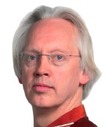Marcel van Marrewijk's Blog, page 72
June 29, 2018
Passport – The Next
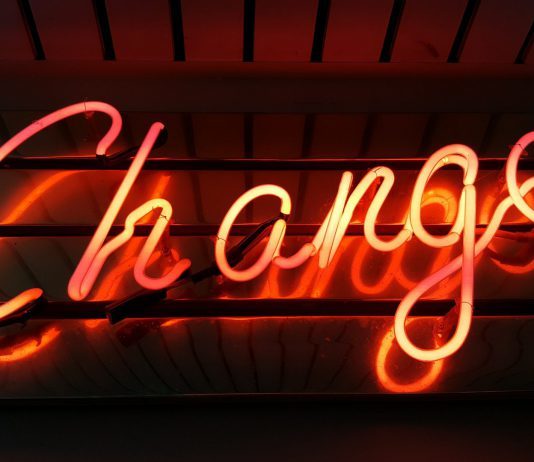
I am adding an extra item to the golden circle model of “Why, How and What” because the passport was built not only thinking about now, but also about the future. It is the foundation for what we believe is coming. We believe that in the future decentralisation will take over. That’s all that society 3.0 is about. Organisations and institutions are getting smaller, and the individual is getting empowered with the rise of peer to peer services. This trend gains strength with the increasing services on the blockchain.
The Seats2meet passport is a catalyst. And a smart catalyst powered by AI to enable smart connections, which is essential in a decentralised environment. When you find yourself surrounded by billions of possibilities and choices, a tool that connects you to exactly what you need, when and where you need is a must-have. And that is what we see as the future of the Seats2meet passport. It will not only connect you to people, events and content inside the ecosystem, but also to services and products connected to the trusted environment of the Seats2meet network and locations.
In the passport, we don’t want to only connect the dots in a smart way. But we also want to use what the decentralization offers, as identity verification, currencies and whatever other utilities it might offer in the future, which we are betting will be more than what we can imagine right now. But still, we are ready for it!
The post Passport – The Next appeared first on Seats2meet.
Passport – the What

What?
The passport ultimately is the place with an overview of all your data and it offers you a personal entrance into the Seats2meet Ecosystem through tailor-made recommendations and connections. It’s the virtual augmentation of the space around you. It’s where users can access and navigate the entire S2M ecosystem in one unique place.
The post Passport – the What appeared first on Seats2meet.
Passport – the How
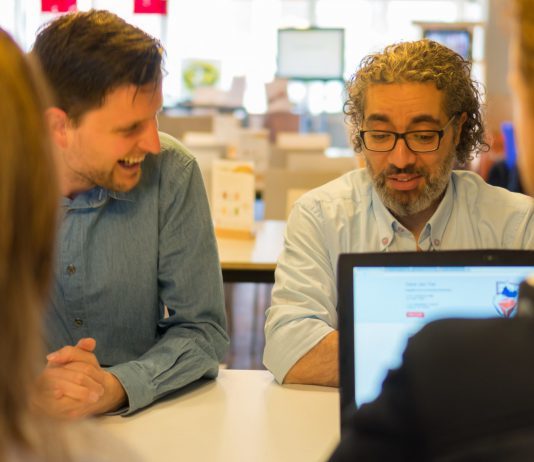
When creating the passport our thought was: what are the online tools that help people in the Seats2meet ecosystem to connect, collaborate and grow?
First of all, we have the connecting part. The first part of connecting is showing yourself the way you want to be seen, and owning it. So in the passport, you can edit all your data at any time. You can change your knowledge and skill tags and set and change all your privacy setting. You own your identity and all aspects of it.
Next comes connecting. We already had lots of tools for people to connect to each other in place. People can message each other and request meetings, see what it is they are working on and what they are looking for today, ask questions that will be sent to all the experts on a specific subject in the ecosystem, and get matched to relevant people by a smart AI algorithm. That’s a lot!
What we did is put it all in one place. In the passport, you get connected to relevant people for you in the ecosystem, to experts that can answer your questions and help you, to events, to people who are in need of your expertise and it offers you the right content. All of those connections are unique to you, based on your tags. That means that no passport will be identical to the other. And in the future we envision on connecting more to you, I till talk about that on the “next” session.
The grow part is ultimately up to you, but we want to make visible your progress at Seats2meet and all the social capital you earned and exchanged. That’s why on the first page you will find a dashboard with your personal data, including the amount of check-ins in a location or in the network, questions, answers, times you were shown as a match to other people in the ecosystem, workspaces and meeting space bookings, and cancellations. So you can see in numbers everything you’ve experienced at Seats2meet.
The post Passport – the How appeared first on Seats2meet.
Passport – the Why

It’s funny, and I feel that it has a touch of destiny, that I am writing this a few hours before embarking on a plane to one of my favourite cities – New York. And what I feel that is funny about it? Well, on a meeting last Tuesday with the whole Seats2meet team we were discussing the reason, our vision for the Seats2meet passport. I heard a lot of words, and what we all agree in is that it is the catalyst, a connector between a single individual and the whole Seats2meet ecosystem. But why are we creating that? Well, for me it makes a lot of sense that it is called a passport. Let me explain you why.
Imagine your dream destination. We usually need our passports to get there – if not, then you are lucky. The passport is not the end destination, but it is what shows that destination who you are, and because of that, you get in. The reason for the existence of the Seats2meet passport is pretty much the same. The whole “why” of the Seats2meet existence is to empower people to become the best versions of themselves, for themselves. We believe that this can be achieved by connecting to other people, exchanging knowledge and skills and creating value. The Seats2meet passport is not the end destination, but the tool that helps you get there. That’s what we wanted to achieve when we first started creating the passport. And I believe we did.
The post Passport – the Why appeared first on Seats2meet.
Passport and collaborations

This year we already mentioned that we strongly believe the future holds a big trend: collaboration. Instead of brands and people competing with each other, which is the mainstream on an industrial era, the network makes collaborations more powerful. We can already see that happening in the market. For example, Youtubers instead of competing with each other make videos together so they can “exchange” their fan base.
The phenomenon doesn’t happen only on youtube, but small brands are also collaborating to become bigger than the ones already stablished in the market. And it is working. Within Seats2meet we incentive collaboration since our early days. We recognise that collaborating is fundamental for freelancers and independent professionals.
In the beginning users occupied the spaces and that’s where the collaboration happened. But in the last decade S2M created several features within it’s online platform so users could collaborate beyond the walls of the locations they find themselves in. There is a chat functionality, an A&Q, meeting request, and online magazine where they can share their stories. And later on they all got powered by an AI drive algorithm, the serendipity machine.
By asking users what are their skills and knowledge we are able to cross references between them and the A&Q, content, locations, events and other users. In this way we only recommend what is relevant to users according to them. And as find collaborating to be essential, we don’t want users to collaborate only amongst themselves, but we want to collaborate as well.
When creating the passport, where users can access and navigate the entire S2M ecosystem from one place, we thought a lot of what can we implement on it in the future. For now we show the content, events, locations, A&Q and users matches for each user. But what else can we include there? We see collaborations with services and products providers. For example, you booked a meeting room in Amsterdam at 10 am, we could match you to transportation at 9 am, or we see that you extended your booking from 5pm to 9pm, working late? We could match you to Mama’s Koelkast, or other food providers from our ecosystem so you can have your dinner. We are talking about truly smart recommendations the moment you need them.
The post Passport and collaborations appeared first on Seats2meet.
Interview Annet Groen en Justine van Zoest met Trendwatcher.TV
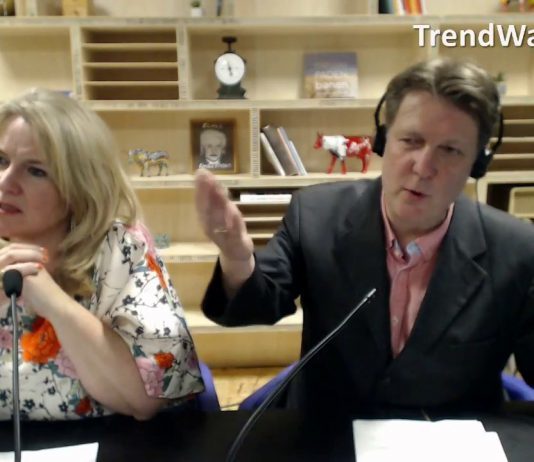
The post Interview Annet Groen en Justine van Zoest met Trendwatcher.TV appeared first on Seats2meet.
June 28, 2018
Learn or teach what you love with Dedico
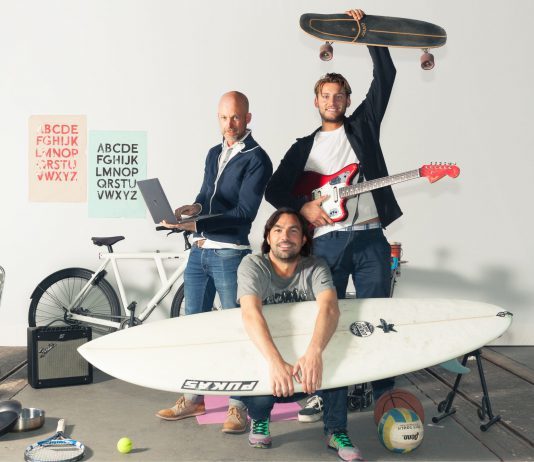
Within Seats2meet we see people sharing their skills and learning relevant things everyday. Dedico is a platform that offers a space for people to teach and learn about the things they love. That’s why we think it is a perfect match. We interviewed Mariano, Dedico’s idealiser and co-founder to know more about it.
Hello Mariano, first of all, could you tell us a bit about yourself?
Well, I am a spanish designer/creative from Málaga. I have worked for 15 years in advertising agencies and design studios. In 2010, when I was living in Barcelona, I started a new path in my career designing interfaces and brand design in a startup. With an artistic and creative background, UIUX and interfaces became a good way to pay my bills, but in my heart I was still missing the artistic side of design. So, maybe because technology was occupying most of my time everyday, I started to consider “creative escapes” to fill up my free time, weekends and holidays.
Anyways, I never was a quiet guy, I played in experimental music bands, won a few photography contests and like filming when I am not surfing, baking or making calligraphy. I am not especially good at any of this, so in the end I think I became a specialist in going to workshops instead of learning something for real, hahaha.
You are the co-founder of Dedico, a platform for workshop teachers and the long life learners who would like to take part on those workshops. Where did the idea for this business came from? And why?
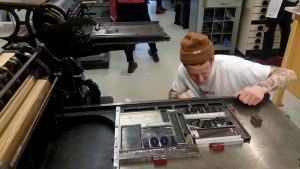 At that time in Barcelona, I really needed to balance my not very exciting professional life with some creative activities, but I never had time after work. My partner at that time couldn’t travel that summer, so I was alone for the first time during a holiday. I had to decide what was more important, the activity or the destination. And my conclusion was that I didn’t really care about the destination at all. What really mattered was doing what I like and learning calligraphy with a master was my biggest (professional) obsession and frustration for years. I started asking people who recommended me going to the Oriol Mirò and Allan Daastrup Copplerplate workshop in Denmark. It took me a flight to Hamburg, a train to Flensburg, another train to Rødekro and two tiny local buses (I was the only passenger) for reaching the small village of Logumkloster. I spent 10 days walking in amazing forests, drinking wine till very late everyday, chatting about typefaces and design, listening to free Bach organ concerts in an old church and suddenly, after 10 days of holidays, boom! years frustration were gone. I was able to make calligraphy. When I came back to Barcelona I said to everyone, these are the holidays of the future, everyone should travel like this at least once in a lifetime. This was summer 2012.
At that time in Barcelona, I really needed to balance my not very exciting professional life with some creative activities, but I never had time after work. My partner at that time couldn’t travel that summer, so I was alone for the first time during a holiday. I had to decide what was more important, the activity or the destination. And my conclusion was that I didn’t really care about the destination at all. What really mattered was doing what I like and learning calligraphy with a master was my biggest (professional) obsession and frustration for years. I started asking people who recommended me going to the Oriol Mirò and Allan Daastrup Copplerplate workshop in Denmark. It took me a flight to Hamburg, a train to Flensburg, another train to Rødekro and two tiny local buses (I was the only passenger) for reaching the small village of Logumkloster. I spent 10 days walking in amazing forests, drinking wine till very late everyday, chatting about typefaces and design, listening to free Bach organ concerts in an old church and suddenly, after 10 days of holidays, boom! years frustration were gone. I was able to make calligraphy. When I came back to Barcelona I said to everyone, these are the holidays of the future, everyone should travel like this at least once in a lifetime. This was summer 2012.
How did the idea become a company?
In 2013 I moved to Amsterdam for working as a designer in Layar, an augmented reality start-up, and Dirk Groten was CTO and one of my bosses in this company. In 2016, we were both free and coincided in time and space again. He has a great reputation in the tech business and community, so I pitched him the idea, and he just decided to become my partner, CTO and CEO of Dedico (thanks god:). Someone had to put some order in the house.
Can anyone include their workshop at Dedico?
Absolutely. We are an open platform, not just a webpage. Behind Dedico there is a year of hard work creating a platform able to host almost any kind of learning course, camp, course submitted by teachers themselves and organisations, with or without accommodation, and all over the world. We curate the submitted content under the rule of being a real learning holiday, not just a touristic experience. So we expect travelers to achieve their personal goals. If the program doesn’t fit to our concept of true learning, we recommend to the organiser to create another program more Dedico-alike. The program of the workshop has to be pretty clear because we don’t want frustrated customers.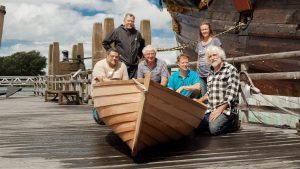
What is the craziest workshop there?
Umm, there are a few of them. I am a big fan of Dafi Kühne’s Typographic summer in Switzerland. I have attended one of his workshops myself and what you can learn in two weeks with this guy is way deeper than what you can learn in a trimester in the university. The “Knife walkabout” in an indian reservation in California; sailing in a tall ship, building your house in Virginia or a bamboo villa in Bali are all pretty amazing. The martial arts retreats where you live like a Shaolin monk in China or this Muay Thai one to become a killing machine in Thailand are pretty tough. Silent retreats, Ukulele in Hawaii, Building your own robot, Gipsy jazz guitar retreat, learning shamanism or Reiki for animals are about to come. But not everything has to that “unusual”, we have plenty of selected surf camps, photography courses and sushi lessons. Personally, I would go to all of them! We have six learning areas: “creative & crafts”, “music and dance”, “tech and languages”, “food and beverages”, “sports and outdoor” and “mind and wellness”.
And which workshop you feel is a must do?
A “must do” learning experience is a call inside of everyone. It’s a very personal thing. Everyone has something to learn. Nobody proudly say: “I don’t want to learn something new” right?. Learning doesn’t only mean intellectual topics, you might want to learn how to write a novel and other people might be interested in how to customize a yellow 1996 Opel Calibra. We don’t judge, we just provide the people who want to learn something, the right course for learning it. And If I you come back home learning what you expected, this is called happiness.
My native language is Portuguese, and Dedico is the first person conjugation for the verb “to dedicate”. Does the name have something to do with it? And if not, where did the name Dedico come from?
When we were thinking about our company’s name the main drive was always the difference between spending some time doing something (experience) or fully devoting your time on your passion (learning). That’s why we thought of introducing courses as a holiday format, because holidays are the best quality time for us (normal people) to practice something during the year. In Spanish or Italian this word “devoting time” is also known as “Dedicatio” or “Dedicazione”. The Dedico word and logo are about deeply focusing on something until you dominate it.
Seats2meet is a big fan of your platform. How do you think our users could make the most out of Dedico?
Well, we as Dedico team members are our target group ourselves. We never stop learning something new or attending courses. We are building a business, but we also believe in the honest drive of sharing knowledge. And we can recognise ourselves in the audience of Seats2meet, we are part of the same movement. We like exchanging skills and knowledge with colleagues and partners. It’s not strange in our life to see Dirk mentoring developers, or myself organising calligraphy workshops at home, and later on people compose music for our videos or teach us SEO techniques free of charge. Dedico is also about a connected community, giving and receiving. We are also like freelancers, who always need to continue refreshing their expertise with new areas of knowledge, never get stuck. We don’t want people to define our working time, but neither the industry to define what holidays have to be for the people. The time of choosing between beach or mountain is over, now we can choose beyond. Doesn’t that sound like we are all in the same boat?
The post Learn or teach what you love with Dedico appeared first on Seats2meet.
Laat je to-do lijsten los tijdens mindful pilates van Jasmijn
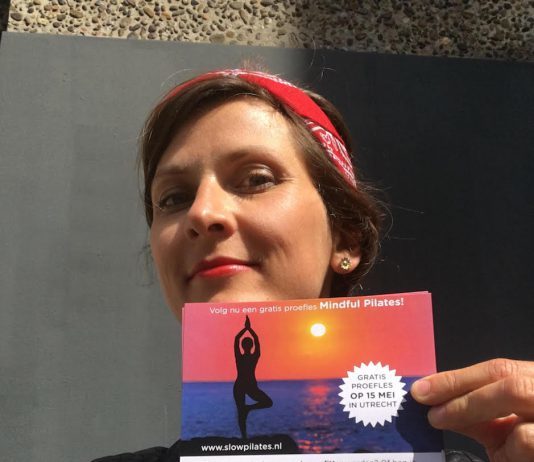
Wil jij gebalanceerd je weekend in? Kom eens een keer mindful pilatessen bij Jasmijn. Ze startte in 2017 met haar onderneming “Slow Pilates”, en geeft sinds kort de weekafsluiter op vrijdag om 14:00 bij Seats2Meet Utrecht Centraal. Als je wil weten wat deze mindful afsluiter van de week inhoudt, lees dan vooral verder.
Jasmijn, waarom heb jij ervoor gekozen om mindful pilates docente te worden?
Het is eigenlijk een samenkomst van heel veel dingen. Waar het op neer komt: mijn lijf vindt het niet leuk om heel veel achter de computer te zitten, dus ben ik op zoek gegaan naar een manier om klachten te verminderen. Ik kwam toen via via uit bij een fysiotherapeute (Sanne Nijenhuis), en zij heeft een vorm van pilates ontwikkeld die heel goed bij mijn behoeftes aansloot om rug, nek en schouderklachten te genezen en te voorkomen. Ik volgde een jaar of drie geleden les bij haar en besloot na een jaar om zelf ook docente te worden, omdat ik anderen ook heel graag leer wat ik heb geleerd. Namelijk: hoe je je spieren kunt leren ontspannen tijdens het werken, maar ook na werken.
Waarom heet jouw onderneming Slow Pilates?
In sportscholen wordt een heel andere vorm van pilates gegeven. Deze vorm past niet bij mij, daarom wil ik me met mijn naam onderscheiden en gelijk al duidelijk maken dat het gaat om een ander soort vorm pilates. Zoals de naam al zegt, ik ben van het langzaam de oefeningen uitvoeren, langzaam voelen, langzaam bewust worden van je eigen lijf, je eigen kwaliteiten en minpunten.
Wat is het verschil tussen jouw vorm van pilates en yoga?
Ik krijg deze vraag de laatste tijd heel vaak en naarmate ik me meer verdiep in allerlei oefeningen zie ik wel een aantal overeenkomsten met hatha yoga oefeningen. Dus er zit vast wat overlap in. Maar mijn vorm van pilates is ook best theoretisch. Ik leg veel uit over basishoudingen, over een pijnspiraal waar mensen in komen, hoe hersenen pijn vast leggen en registeren. Dus in mijn les gaat het om begrijpen en voelen. Terwijl het bij hatha yoga vooral om voelen gaat, vermoed ik.
Wat wil jij mensen graag bijbrengen met jouw lessen?
Ik wil mensen graag bewust maken dat ze zelf van hun klachten kunnen afkomen, door steeds beter hun eigen grenzen te leren kennen. Ik herhaal heel vaak de zin “stop als het pijn doet” of “voel je eigen grenzen”. Dan hoop ik dat mensen tijdens hun werk ook aan mij denken en dat als ze een half uurtje hebben gecomputerd gewoon even lekker opstaan om een kopje thee te pakken en een rondje te wandelen. Verder is het natuurlijk altijd mooi meegenomen als mensen ontspannen de deur uit lopen.
Waarom moeten mensen naar jouw weekafsluiter toe?
Omdat ze zichzelf en hun lichaam beter leren kennen, even alle to-do lijsten los kunnen laten, er meer ruimte ontstaat voor andere ideeën, en er meer connectie komt tussen lichaam en geest.
Jasmijn verzorgt vanaf deze vrijdag wekelijks de weekafsluiter om 14:00. Een les duurt 30 minuten en is gratis. Als je een volledige les bij haar wil volgen kan dat op Springweg 82, op dinsdagavonden. Check www.slowpilates.nl voor meer informatie.
The post Laat je to-do lijsten los tijdens mindful pilates van Jasmijn appeared first on Seats2meet.
June 27, 2018
Brand New: The First Blockchain Book For Managers
 What if selling your house would be as easy as sending an email?
What if selling your house would be as easy as sending an email?The Blockchain is known as the underlying technology for cryptocurrencies such as Bitcoin. When you combine this technology with a new organizational model, management is reinvented. Writers Paul Bessems and Walter Bril wrote the book ‘Blockchain Organizing for Managers‘.
“Blockchain can contribute to challenges such as low productivity growth, the new European privacy law, the power of large tech companies and fake work & fake news. Traditional management is in need of replacement because productivity growth doesn’t keep up with our rising welfare costs.” – Paul Bessems
The book is aimed at managers who want to know more about Blockchain Organizing for business and want to make decisions about this by starting (proof of concept) projects, developing strategies or making policy. Earlier in 2017, both writers published the ‘Blockchain Bible’.
Next internet phase: transfer of value
Blockchain can be seen as the next phase of the Internet, but also as an extra layer on the internet. With the Internet, we easily copy information: an email in the outbox of the sender and one in the inbox of the receiver. But when you have to pay two people ten euros, it is not the intention that you take a photo of a ten-euro bill, send it to those two people and then say that it has been paid. We do not want to copy money or in general value or assets. You also want to be sure that the sender is the rightful owner of the value you are going to receive. These are two important additions of blockchain on the existing internet. You have to prove that you are the owner, that you spend your value only once and the digital transport from sender to the receiver has been done safely. In principle, these three agreements can be programmed via a blockchain protocol. To do peer-to-peer transactions, all you need is a computer device, internet connection, and blockchain protocol. This simplification of doing business will have major implications for management.
Changes in traditional management
Two main reasons that companies – and with it, traditional management – exist, are: minimizing transaction costs and (efficiently) connecting resources to activities, with the aim of increasing productivity. Blockchain Organizing is a renewed invention of management. It is disruptive technology (blockchain), applied in a fundamentally new organizational model (Weconomics). This allows us to organize trust, work, and economics without increasing complexity and bureaucracy.
Walter Bril, one of the authors of the book ‘Blockchain Organizing for Managers: The Reinvention of Management’, adds: “Management as an invention, as technology, has not fundamentally changed in the last hundred years. Up to now, adjustments have certainly been made, such as recently Agile or self-managing teams. But these concepts have never challenged ‘the firm’ or hierarchies as a superior form for organizing work. It turns out to be relatively small adjustments within an existing invention, which largely consists of using buildings, hierarchies, plans, informing, assessing, deciding, rewarding and punishing.”
With Blockchain it is possible to change almost all business aspects.
Blockchain technology in practice
Except for office buildings, many business aspects can be programmed. As an example, the basis of the bitcoin community (if you would like to see this as a company) consists of three roles: miners, maintainers, and movers (users). Miners receive an immediate reward for their work, maintainers, and movers indirectly (as the value of their community and corresponding coin or token grows through their effort to organize trust). This means that an important management aspect (rewarding) has been fulfilled. Other aspects, such as hierarchy, planning, informing, assessing and deciding, are ‘rules’ and can be replaced by a protocol. Management can therefore also become a mechanical technology. A blockchain protocol delivers the same output against much less bureaucracy and complexity. This reduces organization costs and increases productivity.
This principle applies to all offices, including government, education, and healthcare. For example, Blockchain Organizing can not only be used in the financial sector or by HR professionals but also for applying for a passport, keeping track of your e-portfolio or the electronic patient file and within supply chain management for tracing & tracking. The way in which we connect people and resources to activities, projects, and goals in order to increase productivity has not fundamentally changed since Taylor and Ford. Blockchain Organizing can certainly change a lot. When organization costs as a result of bureaucracy increase and transaction cost, as a result of digitalization, decrease: hierarchies become markets.
About the authors:
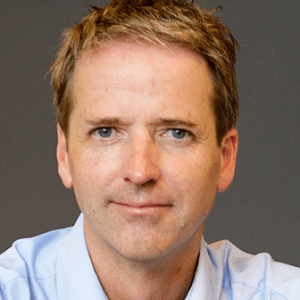 Paul is CEO of Weconet Blockchain Technologies
Paul is CEO of Weconet Blockchain TechnologiesPaul Bessems brings blockchain technology and organizational science together. He moves between science and practice, is an international speaker, blockchain consultant, and (co) author of more than ten management books. He has more than 25 years of experience in designing and developing new organizations that align better with our new context (data economy) and new organization technologies such as blockchain. He is an expert in the field of Blockchain Organizing.
 Walter is CTO of Weconet Blockchain Technologies
Walter is CTO of Weconet Blockchain TechnologiesWalter Bril is a process knowledge management expert. For more than 25 years now he has been involved in analyzing, (re) designing business processes, with his focus mainly in the field of practical knowledge retention management. Currently, this shows concretely in the form of contributing to the San Francisco based SaaS start-up Elements.cloud. As one of the original co-creators of the Universal Process Notation (UPN) and member of the core team of Elements.cloud, he adds value to mainly Salesforce customers.
For more information visit Weconet.
The post Brand New: The First Blockchain Book For Managers appeared first on Seats2meet.
June 26, 2018
The S2M Passport Intro
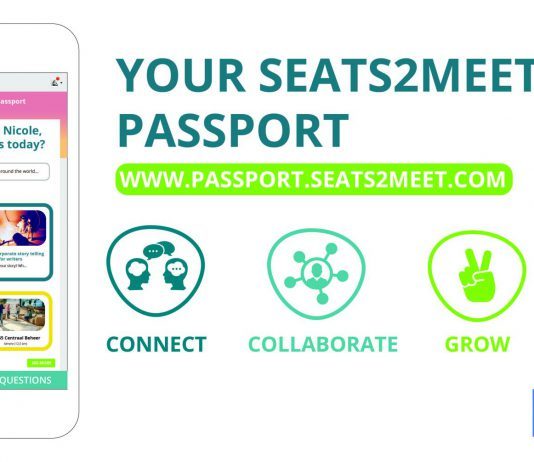 S2M Passport, where you can access and navigate the whole S2M ecosystem in one place.
S2M Passport, where you can access and navigate the whole S2M ecosystem in one place.In the last ten years we have accumulated several functionalities to help our experts connect, collaborate and grow. Our ecosystem grew from a table with twenty seats full with freelancers to more than 200 locations worldwide and more than 60.000 professionals accumulating thousands of skills between them. To improve even more the connection within the ecosystem we created the S2M passport. Here is how you can make the most out of it:
Where can I find it?
To access your passport you must first create an account at Seats2meet.com, if you already have the login you can go to seats2meet.com, click on your picture on the upper right corner and select “Your Password” or simply go to passport.seats2meet.com.
What can I do with it?
All your actions in one place
In the passport you can access and manage all the aspect of your S2M experience; your profile, bookings, vouchers, reviews, A&Q and chats. See more details below.

Easy access to the S2M Ecosystem
You can access the entire S2M ecosystem by telling us what your focus is today and you will be automatically checked-in, with the same access to the ecosystem as when you check-in via a location. Enjoy!

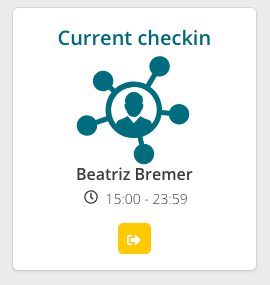
Manage your check-in status
See your check-in status and check-out with one click.
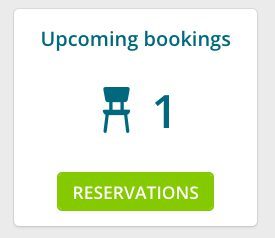
Manage your future reservations
Keep track and edit your future workspace and meeting rooms reservations.
Visualise your social capital
At Seats2meet you can book flexible workspaces for social capital instead of monetary capital. Visualise the social capital you exchange with other with our new points system. Every action as asking or answering questions from the ecosystem, chat or meet with a coworker earns you a point.
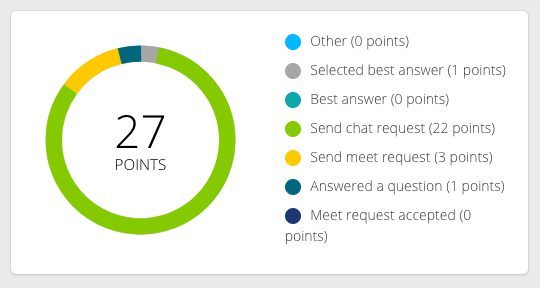
You can also manage and access past matches and questions and answers, so you don’t miss any opportunity from the ecosystem.
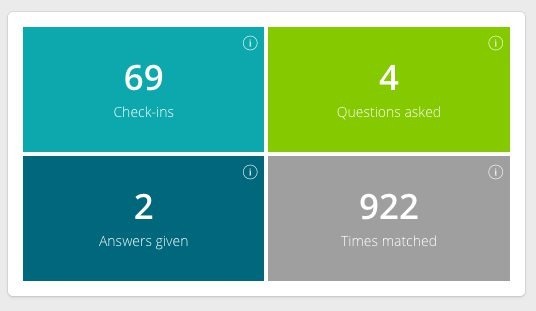
Manage your data
You are in control of all your personal data, and you can change your mail and cookie setting at anytime, making the passport 100% compliant with the GDPR.

Get – only relevant – messages
The Serendipity Machine – an AI driven algorithm – creates matches between you and relevant experts, events, questions, locations and content to you based on your profile knowledge tags. See them all in your customised messages board.
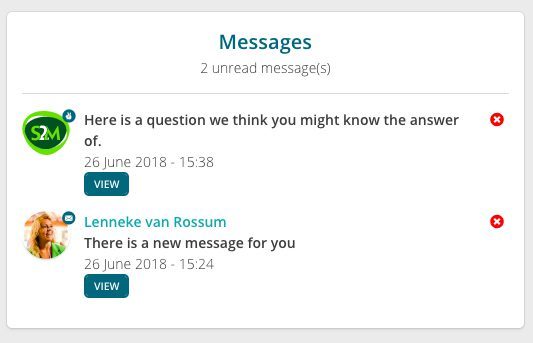
The post The S2M Passport Intro appeared first on Seats2meet.

